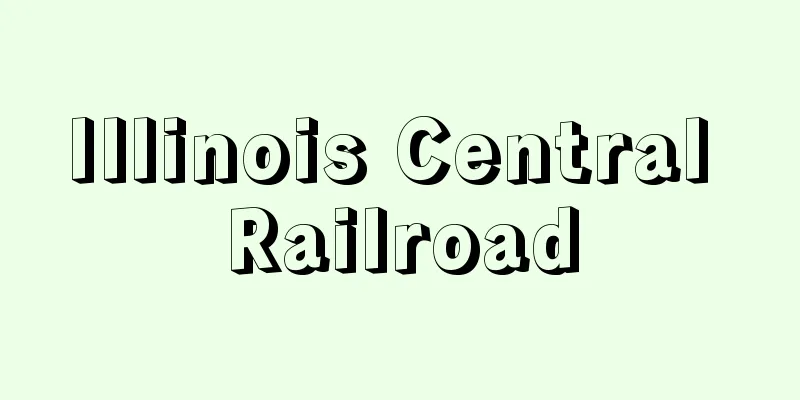Illinois Central Railroad

|
...As agricultural production developed, the city became a base for exporting wheat to the east. In particular, the Illinois and Michigan Canal was opened in 1848, followed by the construction of railroads such as the Illinois Central Railroad (1852), and the city's importance as a key water and land transportation hub connecting the eastern industrial region with the western agricultural region increased. In 1848, an exchange (the Chicago Board of Trade) focusing on grain was also opened. *Some of the terms mentioned in the "Illinois Central Railroad" are listed below. Source | Heibonsha World Encyclopedia 2nd Edition | Information |
|
…そして,農業生産が発展すると今度は東部へ小麦を送り出す拠点になってゆく。とりわけ,48年にはイリノイ・ミシガン運河が開通し,次いでイリノイ・セントラル鉄道(1852)をはじめとする鉄道が建設され,東部工業地帯と西部農業地帯を結ぶ水陸交通の要衝としての重要性が高まった。48年には穀物を中心とする取引所(シカゴ商品取引所)も開設された。… ※「イリノイ・セントラル鉄道」について言及している用語解説の一部を掲載しています。 出典|株式会社平凡社世界大百科事典 第2版について | 情報 |
<<: Illinois and Michigan Canal
Recommend
Inukaramatsu - Inukaramatsu
... The Larix genus (larch) is distributed in the...
Zsigmond
…King of Hungary (Zsigmond), reigned 1387-1437. K...
Selectability - kasensei
...Therefore, in order to predict and evaluate th...
Gun Chronicles - Gun
This is a piece of writing about the introduction...
Okagaki [town] - Okagaki
A town in Onga County facing the Hibiki Nada Sea i...
Temporary chores - rinjizoyaku
In the middle and late Heian period, various taxes...
Hercules beetle - Hercules beetle
This beetle belongs to the family Scarabaeidae in ...
Arakawa [town] - Arakawa
A former town in Iwafune County, northern Niigata ...
《Zahlbericht》(English spelling)Zahlbericht
...This problem was solved with the completion of...
Ezochi Goyogakari
…Capacity: 2 people (3 people), salary: 1500 stra...
Litigation Officer - Soshotantou
When a third party other than the person to whom t...
Late yellow day-lily
...Both the English and scientific names come fro...
Neuchâtel (English spelling)
The name of the canton (state) and its capital tha...
Artemisia lactiflora (English name) Artemisia actiflora
…[Hiroshi Aramata]. … *Some of the terminology th...
International Ice Hockey Federation
…In 1936, Japan sent its national team to the Oly...









